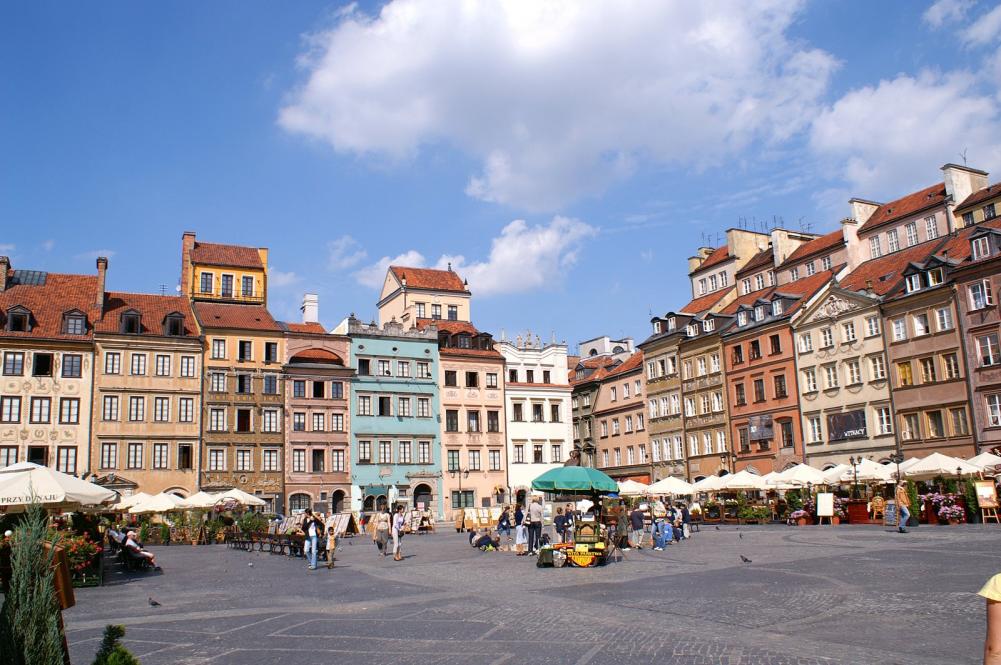
Travelers visiting Poland can learn and practice 11+ essential words and phrases here. We’ve posted the first 11 below.
Listen.
Record yourself.
Play back and compare.
(See more “Learn and Practice Tips” below!)
The First 11 Polish Phrases
Learn and Practice Tips
- Click the black arrow to hear the Polish speaker.
- Click the red dot once to record yourself.
- Click the black square to stop recording.
- When you click the black arrow again, you’ll hear the speaker and then yourself.
- Do it several times until you sound like the Polish speaker.
- Then “Choose a Study Mode” and test yourself with one of the Quizlet games! (You may need to adjust your Options with top right icon
 .)
.)
Why learn these Polish Phrases?
Whenever you travel to a country where you don’t speak the language, you’ll encounter situations when these words will be useful.
Let’s say, you’ve ordered your first meal in a restaurant in Poland and as the waiter serves you, you say “Dziękuję”.
Even if the waiter knows that you don’t speak Polish, your effort may make him smile.
And beyond “Please” and “Thank you”, basic greetings really are the staple of first words you should know in any country you visit.
We start with the most obvious and easiest ones: “Yes” and “No”.
You’ll notice that the word “Proszę” has a couple of meanings: “Please”, “Here you are”, and is also part of the phrase “You’re welcome”.
“Dzień dobry” (literally “Good day”) is a formal greeting that can be used throughout the day.
We’ve also included “Nie mówię po polsku” (I don’t speak Polish) and the question whether your conversation partner speaks any of the languages you may also know.
Good Things to Know
Polish is a West Slavic language that is closely related to Czech and Slovak.
After Russian, Polish is the second most spoken Slavic language.
Polish and other West Slavic languages are written in the Latin script. (As opposed to East Slavic languages such as Russian and Ukrainian, which use Cyrillic.)
There are large Polish-speaking communities in Germany, the UK, Ireland, the US, Canada, Australia, and other countries.
You’ll find that many young people in Poland speak English, but older people, especially outside of cities, not so much.
With them you may have to try your Polish, or use Russian or German.
Polish Pronunciation Tips
Polish letters and sounds in Essentials 1:
ie – has a “yeh” sound in “Nie” (No). Also in “Dobry wieczór”.
ę – has a nasal sound, similar to “-in” in the French word “enfin”: Try it in “Proszę”, “Dziękuję”.
sz – is pronounced the “sh” as in “show”. Try it in “Proszę”.
dzi – is pronounced “jee”, as in “jeep”. Try it “Dziękuję”, “Dzień dobry”.
dz – sounds like the “ts” in “hats”, in “Do widzenia”.
cz – has a “tch” sound, as in “Dutch”. Try it in the last sentence, which starts with “Czy…”.
If you’re eager to learn and practice more sounds, go to Polish Alphabet and Pronunciation.
For English speakers, Polish has a number of sound combinations that are challenging, as you can hear in the list below.
The best approach may be to learn the Polish sound system step by step, repeating often, as you learn each of the words and expressions.
Walking in the country side…
While there’ll be many opportunities to use basic greetings in Warsaw and other large Polish cities, knowing them when you’re outside of a larger city may be crucial.
And, as we always notice when we walk in a village or in the countryside, greetings are common and even expected!
Being a visitor in Poland will make you much more welcome, when you make the effort to greet people in Polish.
The Next 12 Polish Phrases: “Gdzie jest?”
In the next installment – Polish 2 For Travel– you’ll learn to ask where the bathroom, train and bus station, bank, pharmacy etc. are located.
Even if you have a GPS-enabled smart phone, it won’t tell you where the bathroom is – and you’ll certainly find plenty of opportunities to ask other “Where…?” questions.